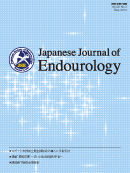Volume 30, Issue 2
Displaying 1-29 of 29 articles from this issue
- |<
- <
- 1
- >
- >|
-
2017Volume 30Issue 2 Pages 115
Published: 2017
Released on J-STAGE: October 17, 2017
Download PDF (973K) -
2017Volume 30Issue 2 Pages 116-118
Published: 2017
Released on J-STAGE: October 17, 2017
Download PDF (993K) -
2017Volume 30Issue 2 Pages 119-122
Published: 2017
Released on J-STAGE: October 17, 2017
Download PDF (1074K) -
2017Volume 30Issue 2 Pages 123-127
Published: 2017
Released on J-STAGE: October 17, 2017
Download PDF (1210K) -
2017Volume 30Issue 2 Pages 128-133
Published: 2017
Released on J-STAGE: October 17, 2017
Download PDF (1431K) -
2017Volume 30Issue 2 Pages 134-138
Published: 2017
Released on J-STAGE: October 17, 2017
Download PDF (1222K)
-
2017Volume 30Issue 2 Pages 139
Published: 2017
Released on J-STAGE: October 17, 2017
Download PDF (975K) -
2017Volume 30Issue 2 Pages 140-146
Published: 2017
Released on J-STAGE: October 17, 2017
Download PDF (1409K) -
2017Volume 30Issue 2 Pages 147-150
Published: 2017
Released on J-STAGE: October 17, 2017
Download PDF (999K) -
2017Volume 30Issue 2 Pages 151-154
Published: 2017
Released on J-STAGE: October 17, 2017
Download PDF (1089K) -
2017Volume 30Issue 2 Pages 155-158
Published: 2017
Released on J-STAGE: October 17, 2017
Download PDF (1030K) -
2017Volume 30Issue 2 Pages 159-164
Published: 2017
Released on J-STAGE: October 17, 2017
Download PDF (1189K)
-
2017Volume 30Issue 2 Pages 165
Published: 2017
Released on J-STAGE: October 17, 2017
Download PDF (974K) -
2017Volume 30Issue 2 Pages 166-169
Published: 2017
Released on J-STAGE: October 17, 2017
Download PDF (1036K) -
2017Volume 30Issue 2 Pages 170-173
Published: 2017
Released on J-STAGE: October 17, 2017
Download PDF (1021K) -
2017Volume 30Issue 2 Pages 174-177
Published: 2017
Released on J-STAGE: October 17, 2017
Download PDF (1128K) -
2017Volume 30Issue 2 Pages 178-181
Published: 2017
Released on J-STAGE: October 17, 2017
Download PDF (999K)
-
2017Volume 30Issue 2 Pages 182-186
Published: 2017
Released on J-STAGE: October 17, 2017
Download PDF (1117K) -
2017Volume 30Issue 2 Pages 187-191
Published: 2017
Released on J-STAGE: October 17, 2017
Download PDF (1204K) -
2017Volume 30Issue 2 Pages 192-195
Published: 2017
Released on J-STAGE: October 17, 2017
Download PDF (1112K)
Endourology
-
2017Volume 30Issue 2 Pages 196-201
Published: 2017
Released on J-STAGE: October 17, 2017
Download PDF (1054K) -
2017Volume 30Issue 2 Pages 202-205
Published: 2017
Released on J-STAGE: October 17, 2017
Download PDF (822K) -
2017Volume 30Issue 2 Pages 206-211
Published: 2017
Released on J-STAGE: October 17, 2017
Download PDF (1028K)
-
2017Volume 30Issue 2 Pages 212-215
Published: 2017
Released on J-STAGE: October 17, 2017
Download PDF (1058K)
-
2017Volume 30Issue 2 Pages 216-222
Published: 2017
Released on J-STAGE: October 17, 2017
Download PDF (1148K) -
2017Volume 30Issue 2 Pages 223-227
Published: 2017
Released on J-STAGE: October 17, 2017
Download PDF (1104K) -
2017Volume 30Issue 2 Pages 228-232
Published: 2017
Released on J-STAGE: October 17, 2017
Download PDF (1023K) -
2017Volume 30Issue 2 Pages 233-238
Published: 2017
Released on J-STAGE: October 17, 2017
Download PDF (1212K) -
2017Volume 30Issue 2 Pages 239-244
Published: 2017
Released on J-STAGE: October 17, 2017
Download PDF (1169K)
- |<
- <
- 1
- >
- >|
